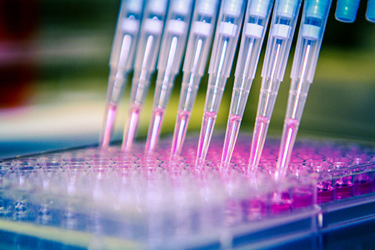Analysis Of Cancer Spheroids Through High-Throughput Screening Assays

Cancer cells grown as spheroids resemble human tumors more closely than cells grown in monolayers, with respect to morphology, structural complexity, phenotype, and sensitivity to chemotherapeutics. Being more physiologically relevant model systems, they can be more predictive of drug profiling and cytotoxicity. So, early screens of drugs have become more dependent on 3D cell culture. In recent years, tumor-derived spheroids have been utilized to optimize cancer therapeutics for ovarian and hepatocellular carcinoma [1,2,3]. However, there are some challenges to using spheroids for drug screening: primarily, the number of spheroids per well, and the shape and size of spheroids, need to be uniform in order to reduce variability between replicates.
Another challenge in working with spheroids is determining penetration of drugs to optimize treatment times. Moreover, the use of spheroids can complicate experimental design and interpretation, but this can be overcome by using the right kinds of reagents, equipment, and protocols. Here we outline different kinds of HTS assays that can be performed on cancer spheroids to assess drug response. We also provide some useful guidelines for handling spheroids and acquiring data to get the most meaningful results. All spheroids were generated on Nunclon Sphera plates using the appropriate Gibco™ cell culture medium.
Get unlimited access to:
Enter your credentials below to log in. Not yet a member of Cell & Gene? Subscribe today.
